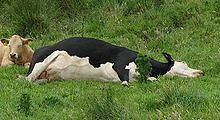 Ever hear of cow tipping? My mom did it when she was a kid. Apparently the cows sleep standing up, and when you shove them they tip like a domino (or some such).
Ever hear of cow tipping? My mom did it when she was a kid. Apparently the cows sleep standing up, and when you shove them they tip like a domino (or some such).
Anyway, the headline was meant as a grabber (did it succeed?) to focus attention on the operative root word “tip.” We are tip lovers, and even that YouTube video above is in tip form!
When was the last time you read a “top 10 list?” (Oh, about 10 seconds ago.) I’m guilty as charged, and the two (only) blog posts I’ve written with tips have received the most retweets on Twitter, too.
It’s always interesting to notice patterns when blogging. I’m going to share a few for your consideration and ponder, too. May I resort to being tippish?
- Checklists and tips are some of the most reader-friendly content you can develop. That goes for blogs, too, and I think it’s because the tone is appealing, it’s educational, and quick.
- One never knows if anyone is reading a blog, or not. What keeps me going are the people who send emails or tweets mentioning a cool post they read.
- People who comment on a blog are few and far in between. I’m not sure the invitation at the end really makes a difference in encouraging comments either.
- Focusing a post on a Fortune company with intriguing commentary helps elevate content to be more authoritative. It also helps bring in the spam, too.
- There are more tools available for bloggers than one can ever hope to research; it’s daunting out here.
- Focus first on content – keep it fresh, keep it active, keep it current, keep it energetic.
- Set some goals to explore applications and tools regularly. Not only will you learn, but others will learn alongside you.
- Teaching is part of giving back. Because my profession usually gets a bad wrap, it’s imperative I teach youngsters wending their way through a growth curve and offer sage counsel about success in public relations.
That goes for blogging, too. Hope a walk down memory lane or a “you’re kidding!” were the reactions you got from this post. I see no change on the horizon. My trending forecast remains bullish on tips. Tip it up galore, just don’t get all tipsy about it.





